
If Maurice Sachs deserves to be remembered today, it’s almost entirely for his effusive memoir, Witches’ Sabbath, reissued last year by Spurl Editions. As I wrote at the time of its republication, Witches’ Sabbath is not only a classic autobiography but an essential reference for anyone interested in French art and literature between the world wars: “Sachs knew everyone who was anyone in the world of French literature between the two world wars. Knew everyone, slept with many, stole from a few.”
Sachs’ first book, The Decade of Illusion, published in the U.S. almost two decades before it appeared (posthumously) in France. Sachs wrote the book during his stay of roughly two years, probably to cash in on his brief celebrity as a traveling lecturer. He’d come to New York City in 1931 at the invitation of his friend Lucien Demotte, who hired Sachs to run a Manhattan art gallery filled with French art. Unfortunately, the art market had dried up as a result of the stock market crash and the two men soon parted ways.

Ever the opportunist, Sachs reinvented himself as an expert on French culture and soon began appearing as a lecturer at lady’s clubs and art societies and on radio. Despite being homosexual, he married a socialite and aspiring writer named Gwladys Matthews. Within months, Sachs had deserted Gwladys for a handsome young man, while the couple were together, Sachs wrote, and Gwladys translated, this breakneck run through the cast of players in French culture and society of the 1920s.
As one reviewer put it, Decade is a “kaleidoscopic parade, staged in the smart salons, attics, theatres, studios and by-ways of France (mostly Paris), which includes in its dramatis personae practically every well known painter, composer, musician, poet, politician, dressmaker, critic, author, book seller, art dealer, and publisher who has gravitated to Paris in the last ten years or so.” And as such, it’s probably still of some interest to scholars of the period. Sachs’ Who’s Who is a good starting point: in the space of barely 250 pages, he manages to squeeze in enough names to fill 11 double-spaced pages in the index, for a rough total of 700 people.
But this is cultural history People magazine style. It’s full of gossipy tidbits and asides: the young pianist Arthur Rubinstein, “So strong, so powerful, he was like a bull on hind legs: when he took a woman’s hand, one imagined the rape of Europa.” Henri Matisse, the movie fan: “He goes each evening, no matter what the film. What appears on the screen does not interest him; he closes his eyes and listens to the murmurs of the neighboring crowd.” André Derain “loves auto racing” and collects landscape paintings by Corot. Maurice Utrillo was a drunk.
As anyone who’s watched an hour of any American newschannel knows, the chief qualification of any successful commentator is a ready supply of opinions, well-informed or not. Maurice Sachs would have been a superstar in this world, for he tosses off judgments as other writers use punctuation. “In all American universities,” he intones, “one worries first about the moral reasons of written works — which certainly would be the last consideration of a young Frenchman.” Good taste makes for bad paintings: “Nothing is more deplorable than a delicious arrangement.” French cinema lags far behind that of America because French film-makers lack “the American mind, less lively, more deliberate and analytical, like the German” — a statement I can’t imagine any film historian agreeing with.
Though several reviewers praised Sachs’ “amazingly superficial chit-chat style,” the fact is that he managed to write a book-length work by filling large gaps between his chit-chat with windy pontifications. But perhaps this was not entirely inappropriate for someone who at one point took vows and began to train as a priest (a gig he soon lost after a wealthy woman complained about the Sachs’ interest in her teenage son).

In some ways, more interesting that the book itself is what came along with the copy I purchased. As the bookplate shows, it came from the library of the heiress and art enthusiast Adeline Lobdell Pynchon. Sachs first met her soon after his arrival in New York City, when she was still married to Henry Atwater. By the time the book was published, she’d moved back to her hometown of Chicago and married Harold Pynchon, a wealthy businessman.
Included in the book was a letter Sachs wrote her in November 1931 — shortly before her marriage to Pynchon — asking whether “there would be any possibility” for him to deliver lectures in Chicago similar to those he was in the process of giving in New York. He needed the work: “The Art season has started rather badly and since you ask me, I confess that I have not so much hopes for sales this year.” “But nevertheless, who knows?” he concluded optimistically.

His call for help was heeded … eventually. In March 1933, the Chicago Tribune reported on a “delightful lecture” that Sachs gave to the Arts Club on “The Decade of Illusion.” Sachs was hosted, according to the article, by “Mrs. Harold Pynchon” and accompanied by Henry Wibbels, “a young painter from California who is with him here at the Ambassador East.”
It was Wibbels for whom Sachs had left his wife, and the two men sailed for France a few weeks after their stop in Chicago. They remained together for nearly four years — some of the worst in Sachs’s life, when he fell prey to alcohol and drugs. In the end, they parted. As Sachs later wrote, “Life played tricks on us because we were trying to play one on it. We had to separate before we were entirely annihilated, Henry by dependence, I by drunkenness and lying.” Adeline Lobdell Atwater Pynchon, on the other hand, remained a fixture of Chicago society and an active patron of the arts until her death in 1975.



























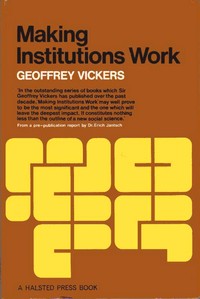 “I have an unpopular answer to an unwelcome question,”
“I have an unpopular answer to an unwelcome question,” 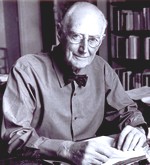 Sir Geoffrey Vickers led a remarkable life. He joined the British Army in 1914 and spent as much time as perhaps any other officer serving in the trenches on the Western Front, earning the
Sir Geoffrey Vickers led a remarkable life. He joined the British Army in 1914 and spent as much time as perhaps any other officer serving in the trenches on the Western Front, earning the 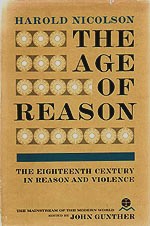 The Age of Reason was the first of a half-dozen or so books in a series published by Doubleday in the early 1960s. Edited by the veteran reporter John Gunther, author of the popular “Inside” books of the 1940s and 1950s, the series had the impressive title of “The Mainstream of the Modern World.” Although works of history, the books were all written by authors better known for fiction (Alec Waugh), reportage (Edmond Taylor), or miscellany (Nicolson), and all focused more on personalities than movements, politics, and larger issues.
The Age of Reason was the first of a half-dozen or so books in a series published by Doubleday in the early 1960s. Edited by the veteran reporter John Gunther, author of the popular “Inside” books of the 1940s and 1950s, the series had the impressive title of “The Mainstream of the Modern World.” Although works of history, the books were all written by authors better known for fiction (Alec Waugh), reportage (Edmond Taylor), or miscellany (Nicolson), and all focused more on personalities than movements, politics, and larger issues.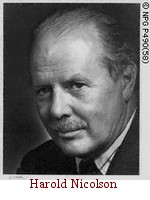
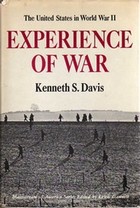 A very long time ago, I checked a book titled
A very long time ago, I checked a book titled 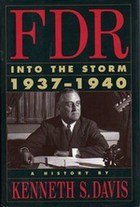 Despite the fact that Random House gave the fourth volume,
Despite the fact that Random House gave the fourth volume, 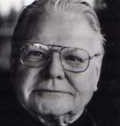 So is that the fate of Kenneth S. Davis? To have steadily and diligently written himself into oblivion? At the moment, all but his history of
So is that the fate of Kenneth S. Davis? To have steadily and diligently written himself into oblivion? At the moment, all but his history of 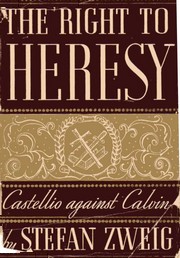
 That winter, the old General moved from the rooms he had rented from the free mulatto, Wormley, in I Street to Cruchet’s at Sixth and D Streets. His new quarters, situated on the ground floor–a spacious bedroom, with a private dining-room adjoining–were convenient for a man who walked slowly and with pain; and Cruchet, a French caterer, was one of the best cooks in Washington.
That winter, the old General moved from the rooms he had rented from the free mulatto, Wormley, in I Street to Cruchet’s at Sixth and D Streets. His new quarters, situated on the ground floor–a spacious bedroom, with a private dining-room adjoining–were convenient for a man who walked slowly and with pain; and Cruchet, a French caterer, was one of the best cooks in Washington.
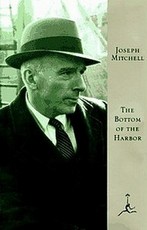
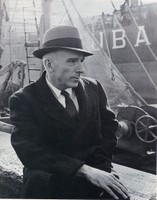 “Mitchell [was] a North Carolinian who became a New Yorker. He went straight from the University of North Carolina to a New York newspaper [The New York Herald Tribune–ed.]. First a reporter, he quickly turned into a feature writer, and then he became an essayist, the best in the city. [He joined the staff of
“Mitchell [was] a North Carolinian who became a New Yorker. He went straight from the University of North Carolina to a New York newspaper [The New York Herald Tribune–ed.]. First a reporter, he quickly turned into a feature writer, and then he became an essayist, the best in the city. [He joined the staff of 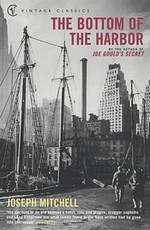 The other five are a kind of writing for which there is no name. Each tells a story, and is dramatic; each is both wildly funny and so sad you can hardly bear it; each tells its story so much in the words of its characters that it feels like a kind of apotheosis of oral history. Finally, like the Icelandic sagas, each combines a fierce joy in the physicality of living with a stoical awareness that all things physical end in death, usually preceded by years of diminishment. One winds up admiring Mitchell’s characters (all real people), loving them, all but weeping for them, maybe hoping to live as gallantly.
The other five are a kind of writing for which there is no name. Each tells a story, and is dramatic; each is both wildly funny and so sad you can hardly bear it; each tells its story so much in the words of its characters that it feels like a kind of apotheosis of oral history. Finally, like the Icelandic sagas, each combines a fierce joy in the physicality of living with a stoical awareness that all things physical end in death, usually preceded by years of diminishment. One winds up admiring Mitchell’s characters (all real people), loving them, all but weeping for them, maybe hoping to live as gallantly.
 “This,” Australian historian Geoffrey Blainey writes in his preface, “as an attempt to write a world history that is not too voluminous. It tries to survey history since the time when the first people left Africa to settle the globe. Inevitably, some large themes which I investigated are described so fleetingly that they are like glimpses from the window of a passing train.”
“This,” Australian historian Geoffrey Blainey writes in his preface, “as an attempt to write a world history that is not too voluminous. It tries to survey history since the time when the first people left Africa to settle the globe. Inevitably, some large themes which I investigated are described so fleetingly that they are like glimpses from the window of a passing train.”